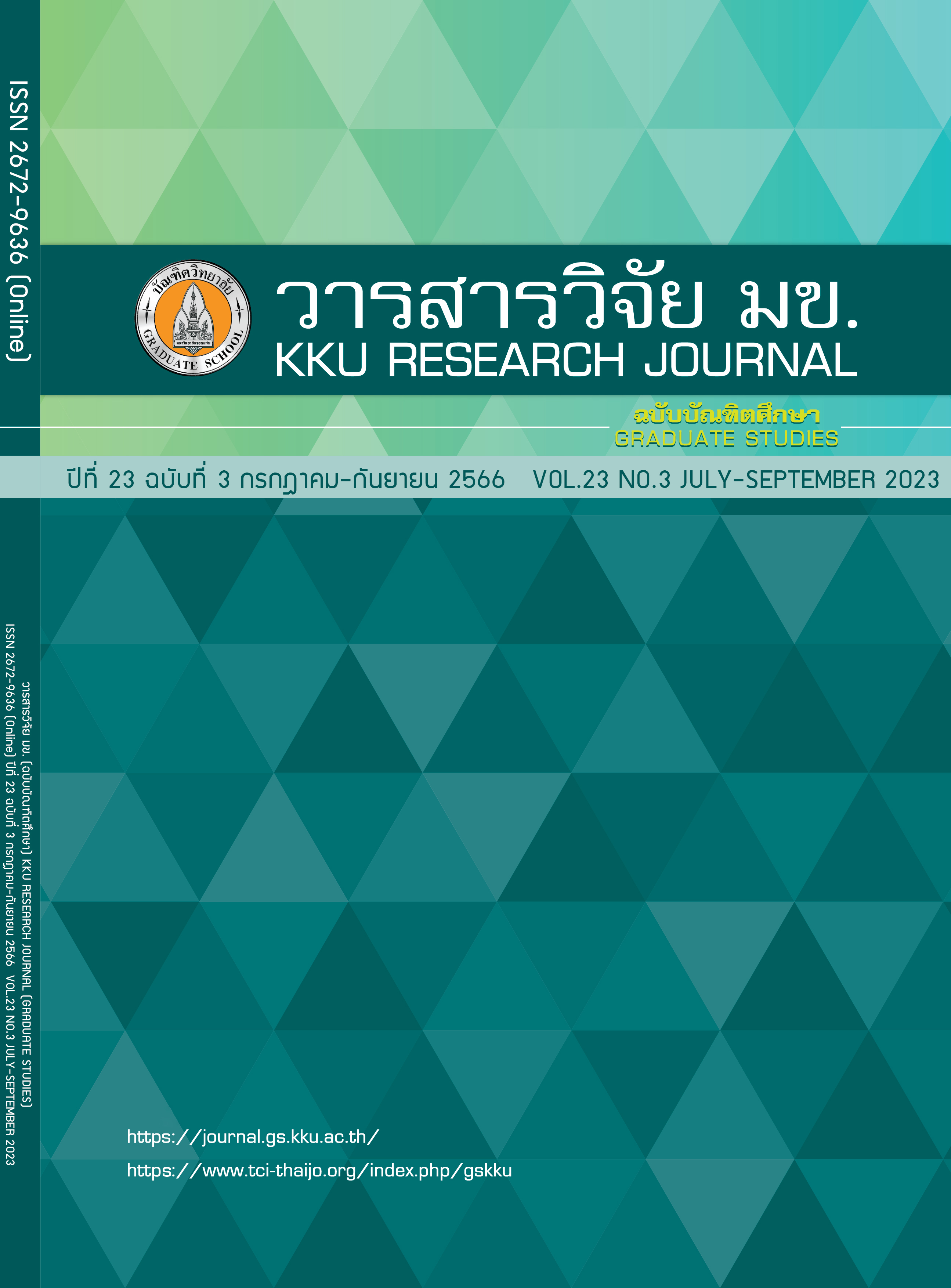Greenhouse Gas Emissions from Rail Infrastructure Construction in Thailand Case Study Double Track Railway Project Southern Line: Nakhon Pathom–Huahin Route
Keywords:
Greenhouse gas emissions assessment, Railway infrastructure, Lifecycle assessmentAbstract
This research aimed to estimate greenhouse gas emissions by life cycle assessment at the rail system construction project case study the construction of a double-track railway Nakhon Pathom to Huahin project. The result revealed a total emission of approximately 0.27 mega ton of carbon dioxide equivalent. The production of material phase accounts for 96% and construction phase accounts for 4% of total greenhouse gas emissions. Greenhouse gas emissions per kilometer represent 2,941 ton CO2eq per kilometer. In the research quantified greenhouse gas emissions from construction module covering earth work, tracks work, structure work and stations work to find the activities that are the main cause of greenhouse gas emissions in each construction module in addition the intensity of greenhouse gas emissions for each construction module were analyzed. The greenhouse gas emission intensity for earth work was 11.51 ton CO2eq per million baht, track work 23.16 ton CO2eq per million baht, structural work 50.71 ton CO2eq per million baht, and station work 36.90 ton CO2eq per million baht.
References
Thailand Greenhouse Gas Management Organization (Public Organization). Low Carbon Society Guidebook. Low Carbon Society Guidebook. First Edition, Laksi District, Bangkok: Taweewat Printing Co., Ltd.;2015.
Seo MS, Kim T, Hong G, Kim H. On-site measurements of CO2 emissions during the construction phase of a building complex. Energies. 2016 Jul 28;9(8):599.
Bamgbade JA, Nawi MN, Kamaruddeen AM. Construction Firms’ Sustainability Compliance Level. Journal of Engineering Science and Technology. 2017 Apr 1;12(2):126-136.
State Railway of Thailand. Railway Double track Infrastructure for Development. 6th ed; 2021
DALKMANN, Holger, et al. Keeping climate change solutions on track. The Role of Rail--A Global Position Paper, 2010.
Lee JY, Lee CK, Chun YY. Greenhouse gas emissions from high-speed rail infrastructure construction in Korea. Transportation Research Part D: Transport and Environment. 2020 Oct 1; 87:102514.
State Railway of Thailand. 122 Years and the future of SRT (State Railway of Thailand); 2019. 15 p.
Bueno G, Hoyos D, Capellán-Pérez I. Evaluating the environmental performance of the high-speed rail project in the Basque Country, Spain. Research in Transportation Economics. 2017; 62:44-56.
Aransiri K. Greenhouse Gas Emissions from Construction Materials and Processes. King Mongkut's University of Technology Thonburi/Bangkok. 2010.
Chang B, Kendall A. Life cycle greenhouse gas assessment of infrastructure construction for California’s high-speed rail system. Transportation Research Part D: Transport and Environment. 2011 Aug 1;16(6):429-434.
Seo Y, Kim SM. Estimation of materials-induced CO2 emission from road construction in Korea. Renewable and Sustainable Energy Reviews. 2013 Oct 1; 26:625-31.
Worapong N. A study of the construction process Reinforced concrete structure for residential houses with environmental impact using Carbon Footprint Assessment. Doctoral dissertation. Chulalongkorn University. 2018.
Panthong R. Greenhouse Gas Emissions and Energy Use in Residential Buildings: Construction and Residential Phase. King Mongkut's University of Technology Thonburi/Bangkok. 2014.
Rungreagthanaphol N. Greenhouse gas emission from construction and operation of Bann Pracharat Project of national housing authority. M.S. thesis, Department of Architecture, Faculty of Architecture, Chulalongkorn University. 2016.
Jiewboonchoo T. Application of a situation model to reduce the cost of greenhouse gas emissions and pollution caused by machinery in the railway construction process. Doctoral dissertation. Chulalongkorn University. 2018.
Hammond G, Jones C. Inventory of carbon & energy: ICE. Bath: Sustainable Energy Research Team. Department of Mechanical Engineering, University of Bath. 2008.
Thailand Greenhouse Gas Management Organization (Public Organization). Appraisal guidelines Product Carbon Footprint Vol 3. First Edition 3. Bangkok: Amarin Printing and Publishing Public Company Limited. 2011.
Ghayeb HH, Razak HA, Sulong NR. Evaluation of the CO2 emissions of an innovative composite precast concrete structure building frame. Journal of Cleaner Production. 2020 Jan 1; 242:118567.
Song C, Gardner KH, Klein SJ, Souza SP, Mo W. Cradle-to-grave greenhouse gas emissions from dams in the United States of America. Renewable and Sustainable Energy Reviews. 2018 Jul 1; 90:945-956.
Kaewunruen S, Sresakoolchai J, Yu S. Global warming potentials due to railway tunnel construction and maintenance. Applied Sciences, 10(18), p.6459. 2020.
Suwan C, Somjai T. Comparative Greenhouse Gas Evaluation of House Construction: A Conventional House versus an Interlocking Block House. 2020.ISSN: 2465-4698. Thai.
Eggleston S, Buendia L, Miwa K, Ngara T, Tanabe K. IPCC guidelines for national greenhouse gas inventories. 2006.
Acquaye AA, Duffy AP. Input–output analysis of Irish construction sector greenhouse gas emissions. Building and Environment. 2010 Mar 1;45(3):784-791.
Chang Y, Lei S, Teng J, Zhang J, Zhang L, Xu X. The energy use and environmental emissions of high-speed rail transportation in China: A bottom-up modeling. Energy. 2019 Sep 1; 182:1193-1201.
Cole RJ. Energy and greenhouse gas emissions are associated with the construction of alternative structural systems. Building and Environment. 1998 May 1;34(3):335-348.
Downloads
Published
Issue
Section
License
Copyright (c) 2023 KKU Research Journal (Graduate Studies)

This work is licensed under a Creative Commons Attribution-NonCommercial-NoDerivatives 4.0 International License.



